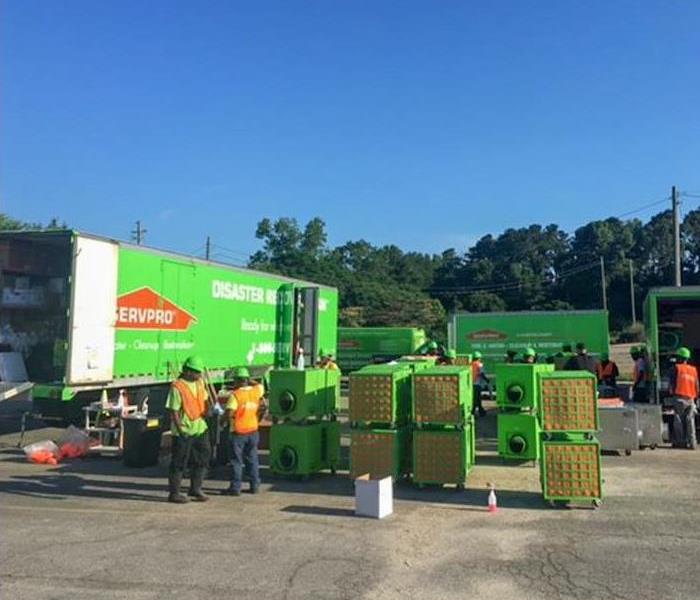Listen to Dave Matthews and Don’t Drink the Water: What You Need to Know about Black Water
9/2/2021 (Permalink)
 Blackwater damage at any level is dangerous. The mixture of sewage and other contaminants provides a significant health risk, and it should be avoided
Blackwater damage at any level is dangerous. The mixture of sewage and other contaminants provides a significant health risk, and it should be avoided
A flood can cause significant damage, but the most significant risk comes from standing water, especially when that water is considered black water. This type of water is created from above-ground flooding and sewage backups, and it is considered contaminated and toxic to people and animals, causing both severe illness and even death. That being said, there are three levels of black water damage, each with varying degrees of severity.
1. Level I
At Level One, this type of contamination is limited to a single structure, and it typically affects a small area. Additionally, this type of water contamination is realized and resolved quickly. A restroom with an overflowing toilet is an example because the situations are usually fixed quickly, not allowing time for the water to penetrate the structure or other porous materials.
2. Level II
At level II, the damage is more significant than Level I because the exposure time and contaminated area are more significant. In this instance, there will likely be a need to remove any items, porous or nonporous, that touched the contaminated water, including furniture, drywall, carpeting, fabrics, and cabinets.
3. Level III
At level III, the water damage is extensive and was brought on by outside sources like city mains and septic systems and is further exacerbated by storm surges and the rising of rivers and streams. Level III usually has a longer incubation time, meaning that the water is filled with a mix of mold, viruses, bacteria, and sewage.
While saving money is tempting, cleaning up from a flood yourself is not always advisable as the water is now a dangerous substance. Check with the North Atlanta, GA, municipality, or your insurance provider for suggestions of local restoration specialists.
Blackwater damage at any level is dangerous. The mixture of sewage and other contaminants provides a significant health risk, and it should be avoided at all costs.





 24/7 Emergency Service
24/7 Emergency Service